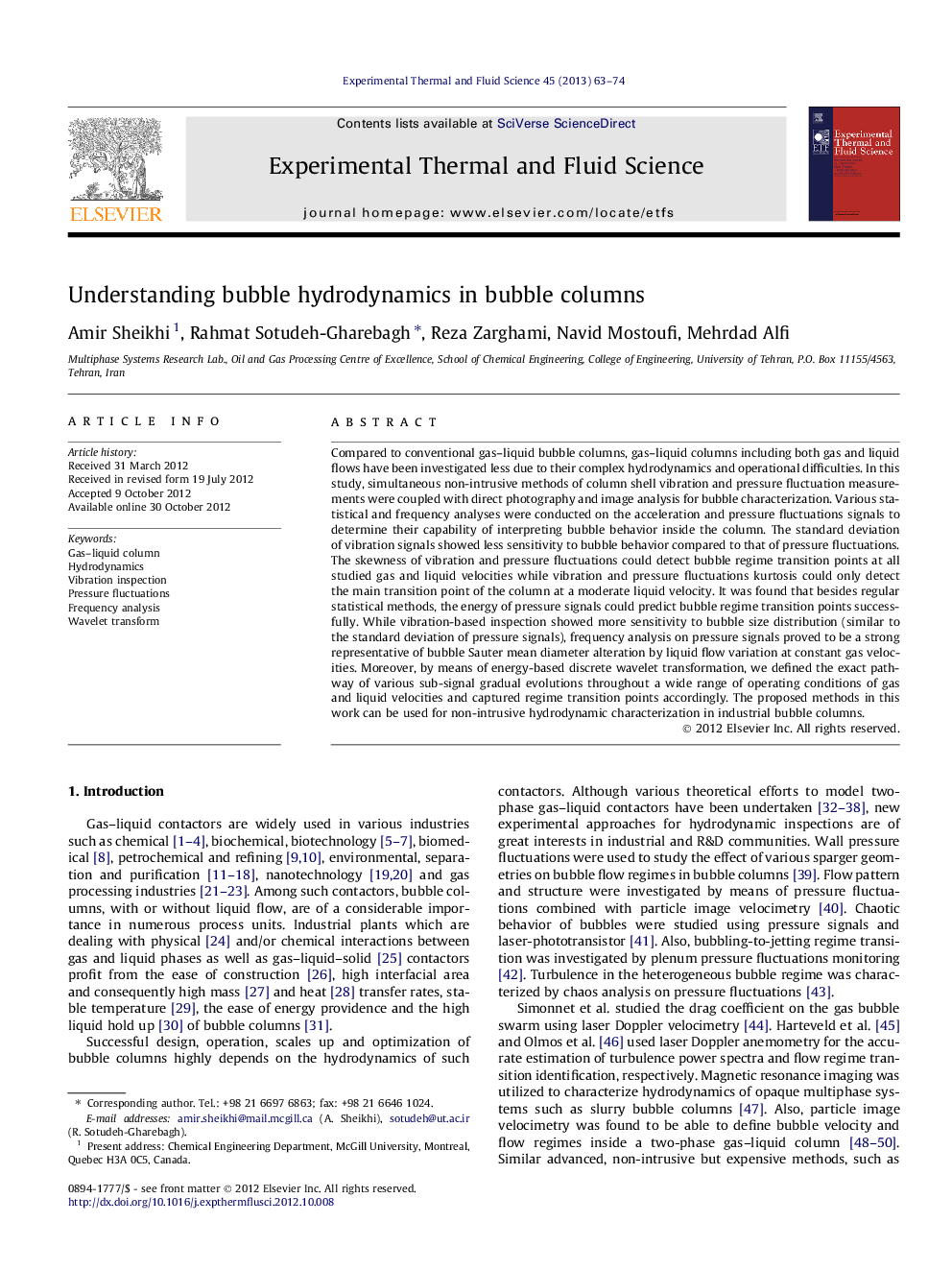| Article ID | Journal | Published Year | Pages | File Type |
|---|---|---|---|---|
| 651858 | Experimental Thermal and Fluid Science | 2013 | 12 Pages |
Compared to conventional gas–liquid bubble columns, gas–liquid columns including both gas and liquid flows have been investigated less due to their complex hydrodynamics and operational difficulties. In this study, simultaneous non-intrusive methods of column shell vibration and pressure fluctuation measurements were coupled with direct photography and image analysis for bubble characterization. Various statistical and frequency analyses were conducted on the acceleration and pressure fluctuations signals to determine their capability of interpreting bubble behavior inside the column. The standard deviation of vibration signals showed less sensitivity to bubble behavior compared to that of pressure fluctuations. The skewness of vibration and pressure fluctuations could detect bubble regime transition points at all studied gas and liquid velocities while vibration and pressure fluctuations kurtosis could only detect the main transition point of the column at a moderate liquid velocity. It was found that besides regular statistical methods, the energy of pressure signals could predict bubble regime transition points successfully. While vibration-based inspection showed more sensitivity to bubble size distribution (similar to the standard deviation of pressure signals), frequency analysis on pressure signals proved to be a strong representative of bubble Sauter mean diameter alteration by liquid flow variation at constant gas velocities. Moreover, by means of energy-based discrete wavelet transformation, we defined the exact pathway of various sub-signal gradual evolutions throughout a wide range of operating conditions of gas and liquid velocities and captured regime transition points accordingly. The proposed methods in this work can be used for non-intrusive hydrodynamic characterization in industrial bubble columns.
► A novel non-intrusive vibration inspection method in two-phase gas–liquid columns is introduced. ► Bubble column hydrodynamics is characterized by statistical and frequency-based analyses. ► The energy of sub-signals showed to be an accurate representative of bubble evolution.
